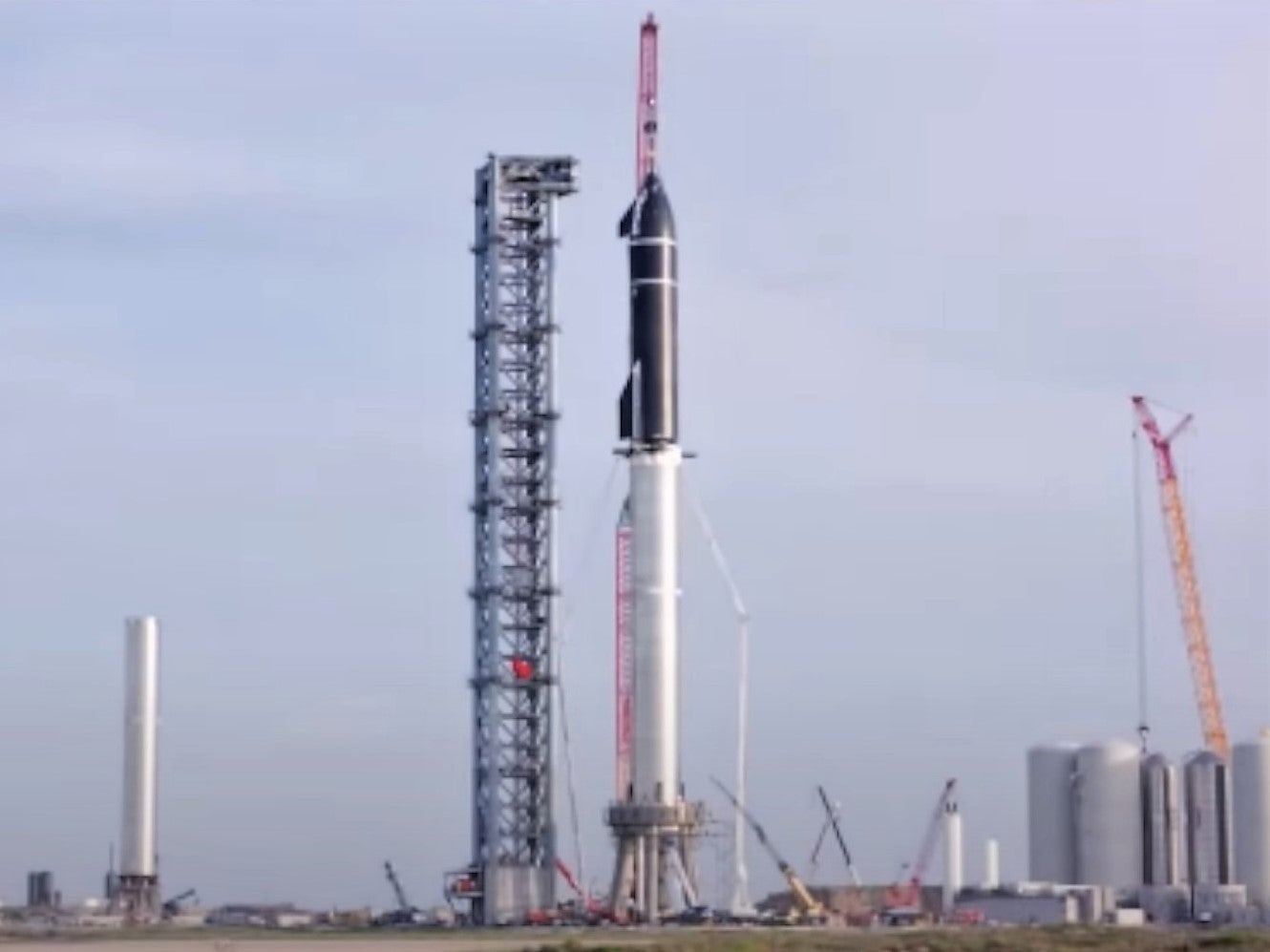SpaceX stars building Starship launchpad ahead of first launch into orbit, Elon Musk says

Your support helps us to tell the story
From reproductive rights to climate change to Big Tech, The Independent is on the ground when the story is developing. Whether it's investigating the financials of Elon Musk's pro-Trump PAC or producing our latest documentary, 'The A Word', which shines a light on the American women fighting for reproductive rights, we know how important it is to parse out the facts from the messaging.
At such a critical moment in US history, we need reporters on the ground. Your donation allows us to keep sending journalists to speak to both sides of the story.
The Independent is trusted by Americans across the entire political spectrum. And unlike many other quality news outlets, we choose not to lock Americans out of our reporting and analysis with paywalls. We believe quality journalism should be available to everyone, paid for by those who can afford it.
Your support makes all the difference.SpaceX has started building the launch pad from which its Starship will fly into space, Elon Musk has announced.
The company is coming close to orbital tests for the new spacecraft, which is a major part of Mr Musk and SpaceX’s plans for the future of space travel. The company hopes that it will one day take humans to Mars, as well as flying them on rapid missions around the Earth.
First, however, it must take off into orbit. And it will do so from a new launch pad in Florida that will be specially built.
Work has now begun on that facility, Mr Musk said on Friday.
“Construction of Starship orbital launch pad at the Cape has begun,” Mr Musk tweeted.
In a follow-up, he confirmed that he was referring to the 39A complex at Kennedy Space Center, which SpaceX leases from Nasa. Previously, it was used by the space agency for crewed launches, including during the Apollo and Space Shuttle programmes.
The first orbital flight for the spacecraft will be an orbital test, which will see it sent into space for the first time.
That will see it undertake a flight of over 90 minutes in length, during which the unscrewed spacecraft will fly into orbit before dropping down into the ocean near Hawaii.
Mr Musk has said that test is scheduled for January.
The company appears to have been making significant progress with the rocket. Last month, it conducted a static fire test that saw it use all six of its engines at once for the first time.
Join our commenting forum
Join thought-provoking conversations, follow other Independent readers and see their replies
Comments